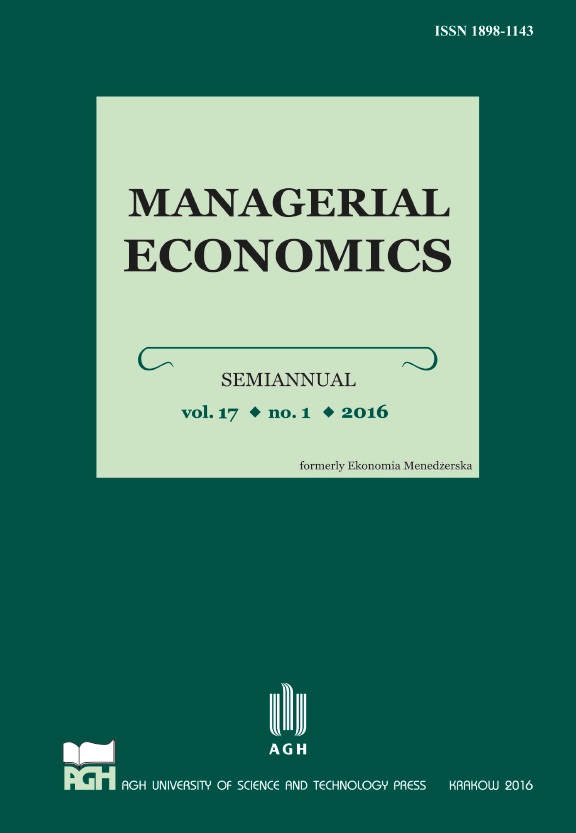The impact of asynchronous trading on Epps effect. Comparative study on Warsaw Stock Exchange and Vienna Stock Exchange
DOI:
https://doi.org/10.7494/manage.2016.17.1.59Abstract
The novelty/value added of this paper is the comparison of the Epps effect between developed and emerging stock markets from Central Europe by means of the correction formula derived by the authors. The main goal of the study is to test whether or not asynchrony in transactiontimes is a considerable source of the Epps effect in the case of the Warsaw and Vienna stock exchanges for the most-liquid assets from these markets. Among all analyzed stock pairs on the WSE, asynchrony turns out to be the main cause of the Epps effect. However, the corrected correlation estimator seems to be more volatile than the regular estimator of the correlation. In the case of the VSE, evidence of the Epps effect is not unique. For the most-liquid and most-correlated pair (namely, ANDR-EBS), the analysis delivers similar results as for Polish stocks. However, the Epps effect could not be detected for the remaining pairs on the VSE. The presented analysis can be reproduced for the same data or replicated for another dataset; all R codes used in the computation within this paper are available upon request.Downloads
Download data is not yet available.
Downloads
Published
2016-07-23
Issue
Section
Articles
License
Download, sign, scan and attach copyright statement form.
How to Cite
Gurgul, H., & Machno, A. (2016). The impact of asynchronous trading on Epps effect. Comparative study on Warsaw Stock Exchange and Vienna Stock Exchange. Managerial Economics, 17(1), 59. https://doi.org/10.7494/manage.2016.17.1.59

